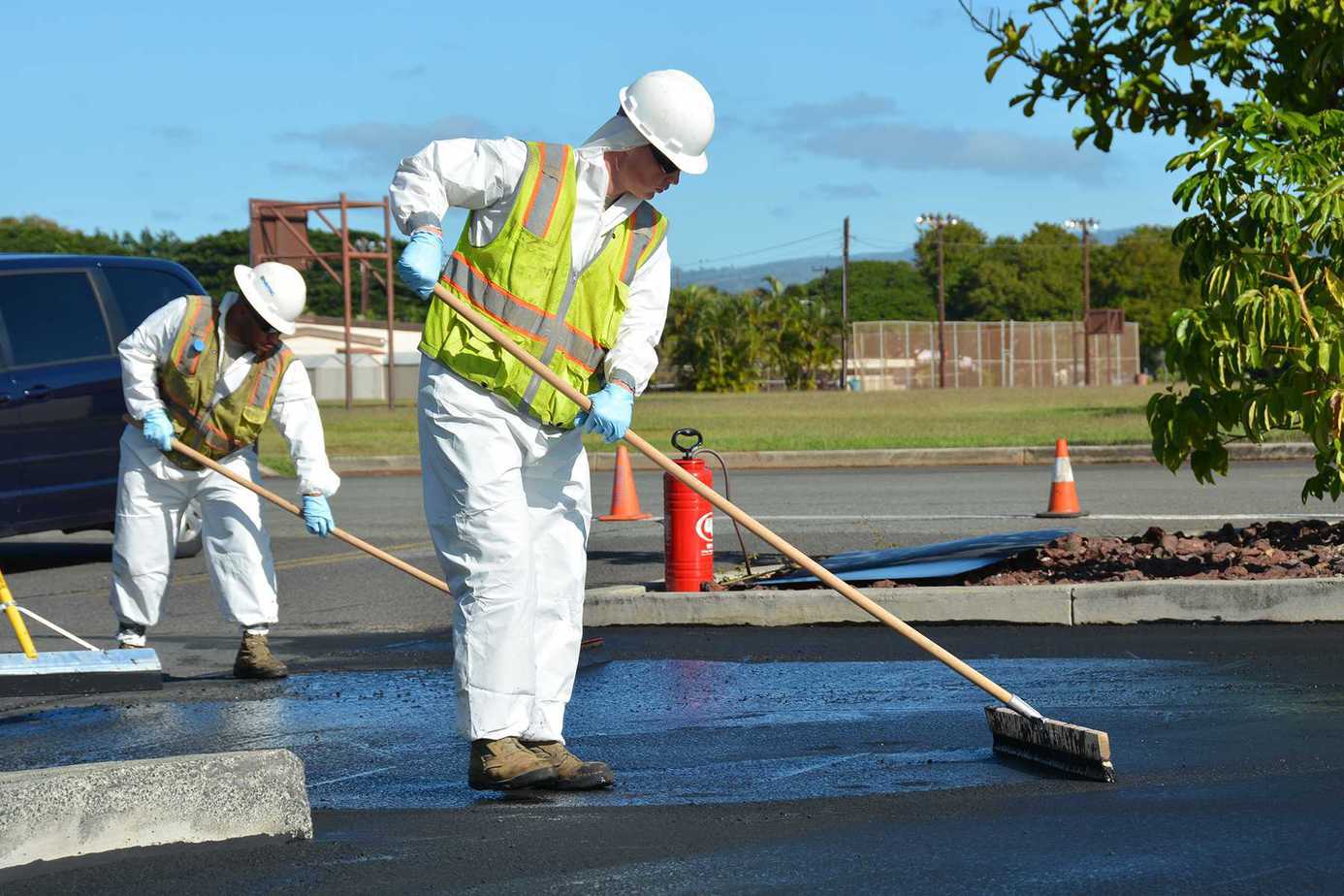
Asphalt is a significant investment for any property, serving as the backbone for parking lots, driveways, and roads. Ensuring its longevity and durability is crucial, and one effective method to achieve this is through pavement sealcoating.
Within the ensuing passages, explore how pavement sealcoating acts as a protective barrier, ensuring your asphalt remains in excellent condition, thereby safeguarding your investment.
Understanding Pavement Sealcoating
Pavement sealcoating involves applying a protective layer to asphalt-based pavements to shield them from damage caused by water, oils, and UV rays. The primary components of a typical sealcoat are bituminous-based products or acrylics that create a tough, protective shell over the surface of the asphalt.
The Benefits of Pavement Sealcoating
Protection Against the Elements
One of the main advantages of sealcoating is its ability to protect the asphalt from the elements. UV rays can oxidize the asphalt, causing it to become brittle and crack. Water can also penetrate the asphalt, leading to damage such as potholes and further deterioration during freeze-thaw cycles. Sealcoating provides a waterproof barrier that minimizes water penetration and reduces the risk of damage.
Enhanced Aesthetics
Sealcoating refreshes the look of asphalt, giving it a dark, rich color that enhances the overall appearance of a property. This not only makes the asphalt look brand new but can also increase the curb appeal and potentially the value of the property.
Cost-Effectiveness
By extending the life of the asphalt, sealcoating can significantly reduce the need for expensive repairs and replacements. This preventive maintenance is far less costly than having to undertake major repairs due to neglected asphalt conditions.
Resistance to Oils and Chemicals
Asphalt surfaces can be susceptible to spills from vehicles, such as oil and gasoline, which can penetrate the surface and cause damage. Sealcoating includes additives that resist these substances, thereby preventing them from causing harm to the pavement.
Ease of Maintenance
Sealcoated surfaces are smoother and easier to clean. Debris and rainwater wash away more easily from a sealed surface, keeping the pavement clean and minimizing the buildup of materials that can cause deterioration.
Best Practices for Pavement Sealcoating
To maximize the benefits of pavement sealcoating, it’s essential to follow the best practices during its application:
- Proper Timing: The best time to sealcoat is when the pavement is relatively new and in good condition. This provides a solid foundation for the sealcoat to adhere to and protect.
- Quality Materials: Using high-quality sealcoating materials can make a significant difference in how well the sealcoat performs and how long it lasts.
- Professional Application: Applying a sealcoat requires precision and expertise to ensure even coverage and proper adhesion. Hiring professionals can prevent common mistakes that might compromise the effectiveness of the sealcoat.
- Regular Maintenance: While sealcoating does extend the life of asphalt, regular maintenance is still required. This includes cleaning the surface regularly and checking for any areas that need touch-ups or additional sealcoating.
Conclusion
By incorporating pavement sealcoating into your maintenance routine, you can significantly extend the life of your asphalt pavement, enhance its appearance, and ensure it remains a valuable component of your property. Through this preventive measure, you protect your asphalt investment efficiently and effectively.
Parking Lots Plus is your trusted partner for professional parking lot maintenance. For more information, visit our website today.
Frequently Asked Questions
The ideal time for sealcoating is when the temperature is between 50-85 degrees Fahrenheit, and the weather is dry. These conditions allow the sealcoat to cure properly.
Generally, asphalt should be sealcoated every two to three years, but this can vary based on traffic and weather conditions.
Sealcoating is not a repair solution for existing cracks. Cracks should be filled before the sealcoating process to ensure a smooth, protective seal.
Modern sealcoating products are designed to be more environmentally friendly, with low volatile organic compound (VOC) emissions. Always check the product specifications or consult with a professional to ensure environmental compliance.
Preparation includes thorough cleaning of the asphalt, filling any cracks, and repairing potholes. The surface must be completely dry before applying sealcoating.
